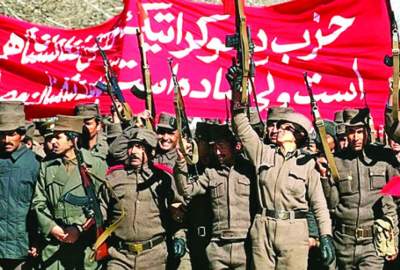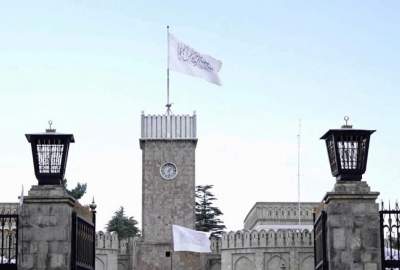Two summers ago gunshots and bomb blasts echoed across the cornfields, and medical evacuation helicopters swooped from the sky almost every day to collect the Marines’ dead and wounded.
Publish dateSunday 31 July 2011 - 14:56
Story Code : 30228
This farming district along the Helmand River, once one of the most Taliban-saturated corners of southern Afghanistan, has turned so quiet over the past three months that some U.S. Marines here quietly wish for a gunfight. “Just to get off a few rounds,” said one, “so we can feel like Marine the Washington Post wrote.
Since the 1st Battalion of the 3rd Marine Regiment arrived in Garmser in mid-April, they have struck fewer than 10 roadside bombs, none of which have proved fatal. Just one grenade and “no more bullets than you could fit in your front pocket” have been fired their way, said the battalion’s commander, Lt. Col. Sean Riordan.
Almost two-thirds of the 33,000 U.S. “surge” troops authorized by President Obama have been sent to southern Afghanistan. Commanders face a tradeoff as they fulfill President Obama’s order to withdraw those forces by the end of next summer.
Two summers ago gunshots and bomb blasts echoed across the cornfields, and medical evacuation helicopters swooped from the sky almost every day to collect the Marines’ dead and wounded.
The relative tranquility that has been achieved seems the necessary prerequisite for Americans to leave and hand over responsibility for security to a feisty local police chief who has surprised U.S. officers with his grit and resourcefulness.
But the Marines do not want to depart anytime soon.
To cement hard-fought gains and prevent Taliban holdouts from wresting back the district, Marine officers want to maintain their current force level of about 1,000 troops until the end of the year. At that point, they estimate, they should be able to get by with half as many, assuming the area receives additional Afghan security forces.
Garmser illuminates the trade-off facing top U.S. commanders as they struggle to fulfill President Obama’s recent order to remove 10,000 troops by the end of the year, and an additional 23,000 by the end of next summer, while also diverting more of the remaining 68,000 forces to eastern Afghanistan to confront a growing insurgency there. In doing so, they do not want to jeopardize the security gains that have been achieved in the south.
Every battalion and brigade commander, it seems, has a reason for why his area should be exempted from major cuts. In Garmser, it is proximity to Pakistan. In other parts of Helmand province, it is the worry of resurgent poppy production. In Zhari district to the west of Kandahar city, it is symbolic importance to the Taliban. The group’s reclusive leader, Mohammad Omar, was born there, and it has long served as a command-and-control hub for insurgents seeking to regain control of Kandahar.
A 4,500-soldier brigade from the U.S. Army’s 10th Mountain Division has pushed into once-impenetrable Taliban redoubts in Zhari this summer, encountering dozens of homemade mines as they have sought to clear villages of insurgents. The operations have increased security, but the Afghan government’s presence still is fledgling, and the Afghan army unit there remains incapable of substantial independent operations, leading American officers in the area to recommend only minimal reductions over at least the next 12 months
Since the 1st Battalion of the 3rd Marine Regiment arrived in Garmser in mid-April, they have struck fewer than 10 roadside bombs, none of which have proved fatal. Just one grenade and “no more bullets than you could fit in your front pocket” have been fired their way, said the battalion’s commander, Lt. Col. Sean Riordan.
Almost two-thirds of the 33,000 U.S. “surge” troops authorized by President Obama have been sent to southern Afghanistan. Commanders face a tradeoff as they fulfill President Obama’s order to withdraw those forces by the end of next summer.
Two summers ago gunshots and bomb blasts echoed across the cornfields, and medical evacuation helicopters swooped from the sky almost every day to collect the Marines’ dead and wounded.
The relative tranquility that has been achieved seems the necessary prerequisite for Americans to leave and hand over responsibility for security to a feisty local police chief who has surprised U.S. officers with his grit and resourcefulness.
But the Marines do not want to depart anytime soon.
To cement hard-fought gains and prevent Taliban holdouts from wresting back the district, Marine officers want to maintain their current force level of about 1,000 troops until the end of the year. At that point, they estimate, they should be able to get by with half as many, assuming the area receives additional Afghan security forces.
Garmser illuminates the trade-off facing top U.S. commanders as they struggle to fulfill President Obama’s recent order to remove 10,000 troops by the end of the year, and an additional 23,000 by the end of next summer, while also diverting more of the remaining 68,000 forces to eastern Afghanistan to confront a growing insurgency there. In doing so, they do not want to jeopardize the security gains that have been achieved in the south.
Every battalion and brigade commander, it seems, has a reason for why his area should be exempted from major cuts. In Garmser, it is proximity to Pakistan. In other parts of Helmand province, it is the worry of resurgent poppy production. In Zhari district to the west of Kandahar city, it is symbolic importance to the Taliban. The group’s reclusive leader, Mohammad Omar, was born there, and it has long served as a command-and-control hub for insurgents seeking to regain control of Kandahar.
A 4,500-soldier brigade from the U.S. Army’s 10th Mountain Division has pushed into once-impenetrable Taliban redoubts in Zhari this summer, encountering dozens of homemade mines as they have sought to clear villages of insurgents. The operations have increased security, but the Afghan government’s presence still is fledgling, and the Afghan army unit there remains incapable of substantial independent operations, leading American officers in the area to recommend only minimal reductions over at least the next 12 months
Source : Afghan Voice Agency (AVA), International Service
avapress.com/vdcg7x9w.ak9zx4j5ra.html
Top hits







